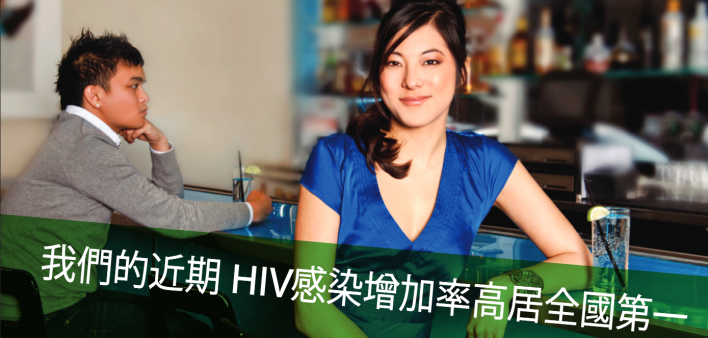Wednesday, May 19, is National Asian & Pacific Islander HIV/AIDS Awareness Day (#APIMay19) 2021. Traditionally, it is a time to raise awareness of HIV/AIDS and related stigma in Asian and Pacific Islander (API) communities. This year, in light of the discrimination and violence directed at the community during the COVID-19 pandemic, the day offers a chance to stand in solidarity with API people and to support anti-violence efforts.
Today is National Asian & Pacific Islander #HIV/AIDS Awareness Day, a day to combat #stigma in #AAPI communities. When we reduce HIV stigma and promote #prevention, #testing, and treatment, we can #StopHIVTogether. https://t.co/MW36mZKrdU #NAPIHAAD #APIMay19 pic.twitter.com/pCVQSJONC1
— Hartford Gay and Lesbian Health Collective (@HGLHC) May 17, 2021
Regarding HIV and the API community, HIV.gov writes:
The API community is the fastest-growing U.S. minority community. However, from 2014–2018, annual HIV diagnoses among Asians and Pacific Islanders in the United States and dependent areas remained stable. Asians, who make up 6% of the population, accounted for about 2% of HIV diagnoses in 2018 in the United States and dependent areas. While Asians and Pacific Islanders comprise a small percentage of people living with HIV in the United States, preventing new HIV infections and helping those with HIV to get linked to effective HIV treatment and care are essential aspects of our work to end the HIV epidemic.
For more information, America’s HIV Epidemic Analysis Dashboard (AHEAD) displays national HIV data for the broader API community across six EHE [Ending the HIV Epidemic] indicators, including HIV diagnosis, linkage to HIV medical care, incidence, knowledge of status, PrEP coverage [referring to pre-exposure prophylaxis] and viral suppression.
In recent years, annual HIV diagnoses have increased among some in the API community, such as API young adults and men who have sex with men. Knowing your status gives you powerful information so that you can take steps to lower your HIV risk and take charge of your health.… Asians and Pacific Islanders have low PrEP coverage compared to other ethnic groups in the United States.
When looking only at Native Hawaiians and Other Pacific Islanders (NHOPI), the Centers for Disease Control and Prevention (CDC) notes that, although this population accounts for a very small percentage of new HIV diagnoses, the ways HIV affects the communities are not always apparent because of their small population size. In 2018, NHOPI made up 0.2% of the U.S. population.
From 2014 to 2018, #HIV diagnoses declined among both Asian people aged 13 to 24 and women.
— CDC HIV/AIDS (@CDC_HIVAIDS) May 15, 2021
Get the latest data and find out how CDC is making a difference: https://t.co/Jb2LRihyMB #NAPIHAAD pic.twitter.com/rIldIioR54
In fact, according to the CDC, of the 37,968 new HIV cases in the United States and dependent areas in 2018, less than 1% (68 total diagnoses) were among Native Hawaiians and Other Pacific Islanders.
Crunching the numbers using different years and data points provides more insight into the HIV epidemic among the API community. AIDSVu.org offers detailed maps and infographics depicting HIV data plus related interviews, such as this Q&A with API health leaders about HIV and viral hepatitis in their communities. Presented by Emory University’s Rollins School of Public Health in partnership with Gilead Sciences and the Center for AIDS Research at Emory University, AIDSVu.org writes the following about #APIMay19 (also referred to as NAPIHAAD):
May 19 is National Asian and Pacific Islander HIV/AIDS Awareness Day (NAPIHAAD), a day to raise awareness about the impact of HIV and stigma among Asian and Pacific Islander communities.
In 2019, Asians, Native Hawaiians, and Pacific Islanders (NHPI) represented 2.2% (796) of all new HIV diagnoses in the U.S. Since 2017, Asians, Native Hawaiians, and Pacific Islanders have seen a downward trend in new HIV diagnoses and experienced a 15% decrease from 2018 to 2019. Despite this decrease, there was an overall 13% increase in new HIV diagnoses among this group from 2008 to 2019.
On this year’s NAPIHAAD, we recognize the impact of social determinants of health and cultural factors such as stigma, language barriers, and discrimination in producing negative HIV-related health outcomes for Asians, Native Hawaiians, and Pacific Islanders. For example:
- In 2018, 13.3% of the U.S. population were living in poverty, compared to the 10.8% of Asian people and 16.7% of Native Hawaiians/Pacific Islanders.
- In the same year, 8.9% of the U.S. population were uninsured, compared to the 6.3% of Asian people and 10.6% of Native Hawaiians/Pacific Islanders.
Learn more about how we can #StopHIVTogether on May 19, National Asian & Pacific Islander HIV/AIDS Awareness Day. HIV and AIDS impact people differently. Join @AllofUsResearch and help increase health research ???? https://t.co/dQ0AIwglbP#NAPIHAAD #JoinAllofUs #AAPI pic.twitter.com/mAtaoCsb9i
— American Academy of HIV Medicine (@aahivmcomm) May 18, 2021
HIV awareness days take place throughout the year. For a list and details, see “2021 HIV/AIDS Awareness Days,” which includes a printable PDF.







Comments
Comments